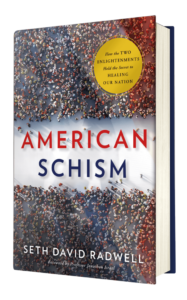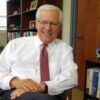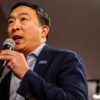By Dan Sally
When you ask someone when America became so polarized, their answer will typically reveal their partisan leaning.
Those on the left might blame Donald Trump, the Tea Party, or the rise of conservative media. Those on the right might start with president Barack Obama’s aggressive agenda in the first two years of his presidency or with the army of insufferable busybodies who’ve emerged on social media in recent years.
For Seth David Radwell, the question was important enough for him to leave his job as CEO of a consumer goods company to commit himself full time to researching the subject. The process took him three years, brought him through 400 years of history, and eventually became his book, American Schism.

I had a chance to sit down with Radwell to discuss his book for the YDHTY podcast (you can listen to the full episode here). In this conversation, I learned how the current political climate is just another wave of polarization in a long history that predates America.
What the Enlightenment has to do with Today’s Polarization
Radwell’s research took him back to the age of Enlightenment, when much of the philosophy that would build the foundation for the American and French revolutions was formed. Where authority had historically come from monarchs and legitimacy from the church for centuries in Europe, Enlightenment thinkers pushed the idea that every individual was capable of reaching an objective truth via observation and logic and that an ideal society could be built on principles of self-governance.
This philosophy rejected the mix of coercion and propaganda that had been used to subjugate the masses, and further targeted the collusion between church and state that acted as a mechanism to keep it in place.
While Enlightenment thinkers and America’s founding ideals are aligned on the importance of self-governance, there’s always been quibbling over exactly how much self-governance the people could handle.
For Radical Enlightenment thinkers, the only legitimate form of government was a representative democracy. They flatly rejected the role of the church in governing, and believed a government led from the ground up was the best way to safeguard against the overreach of a strong central authority.
Moderate Enlightenment thinkers felt that, while government should be earned via the consent of the people, the expertise of educated elites was necessary to ensure a functioning state. Their version of the ideal government was more of an aristocratic republic, with faith playing a larger role than in the Radical version.
Radwell outlines how the Constitution is effectively a compromise between these two camps, with the House providing the representative democracy the Radicals endorsed, and the Senate—then appointed by state legislatures —providing approval from an elite class to guard against mob rule.
As the debate between Moderate and Radical thinkers continued, a third camp emerged that would prove to be a recurring source of discord in America’s political dialogue.
The Counter-Enlightenment: A Fly in the Ointment
Enlightenment culture ushered in new forms of freedom, self-government, and unleashed scientific thinking and progress. However, traditional religious institutions were looking to roll back these changes at the earliest opportunity. Crises and shortcomings in new enlightenment born institutions like republican government were seized upon by Counter-Enlightenment forces. The power and danger of this was shown very starkly in France, where Radwell chronicles how the reign of terror was led by Robespierre and “Le Montagne”, harnessing the anger and economic distress of the sans-culottes. This movement rolled back freedom of speech and press and engaged in massive waves of political killing, establishing dictatorial government backed by populist furor. These Counter-Enlightenment forces advocated for a restoration of much of the Catholic Church’s power and had its strong backing and encouragement. It is a popular misunderstanding that the reign of terror was led by radical enlightenment forces. In fact, it was a counter-revolution.
In the United States, the power of Counter-Enlightenment forces to restrict liberty became visible early on in the Alien and Sedition Acts of 1798, which introduced punitive measures toward immigrants and limited free speech for all. Conversely, in correcting flaws and under-representation, Counter-Enlightenment and populist movements have also had crucial positive purposes. In America, while both Moderate and Radical thinkers felt limiting the role of church in government was essential to the ideal government, churches also provided a way for those shut out of American democracy—namely women—to organize and promote ideas important to them. At the turn of the 19th century, a series of religious revivals referred to as The Second Great Awakening provided a platform for women to push important issues that were not being adequately addressed, such as temperance and the abolition of slavery, into America’s political consciousness.
Counter-Enlightenment movements embraced the role of faith in creating an ideal society and had repercussions both positive and negative. By engaging great masses of people who were often excluded or relatively powerless in prevailing republican institutions of government, these movements sometimes gave voice and momentum to essential issues for the greater good. However, in focusing on faith — and usually, one particular faith, these movements often fostered the rejection of the roles of logic, observation, and democratic rights and liberties the Enlightenment was grounded in – threatening the dynamic basis of the American project.
Where Moderate Enlightenment thinkers sought to safeguard against mob rule via educated elites, those in the Counter-Enlightenment viewed religion as the way to protect against rampant immorality permitted via liberal democracy. This movement would resurface in American history, generally around some of the more contentious socio-political issues of the day.
Where Are We Today?
If we apply Radwell’s book to the present, we’re currently living through a period where the Radical and Counter-Enlightenment movements are engaged in a tug of war over the direction of the country, and Moderates are trying to hold it together. Both the populist left and right have eschewed the political establishment in lieu of candidates who wish to disrupt the status quo and implement reforms that are either grounded in the further liberalization of society, or a return to what some consider to be traditional norms in America.
These conflicts are the natural byproduct to changes in our economy and society. What’s clear from reading American Schism is that they tend to reach a fever pitch when the people feel our government and economy don’t serve them.
Radwell notes how the Framers knew they couldn’t predict the future, and enabled us to make reforms when necessary to preserve self-governance as the source of the prosperous democracy we’ve enjoyed. Reforms allow us to contain the powerful forces that such freedom unleashes.
Radwell includes ranked-choice voting among the list of reforms needed today to help moderate the tone of American politics and “inject a much more expansive set of viewpoints into the marketplace of ideas.” This wouldn’t eliminate political conflict but, rather, allow it to enter the political dialogue before it had a chance to boil over and serve as a destructive force.
The Framers of the Constitution hoped their successors would continue to evolve the concept of representative democracy and take the necessary steps to preserve the republic when the chips were down. As we sit in a period where the natural political conflicts between the traditional and liberal schools of thought seem close to tearing the country apart, it’s clear that time is due.
###
Dan Sally serves on the Digital Strategy Council of Rank the Vote and is host of the podcast ‘You Don’t Have to Yell’, which discusses today’s most pressing issues without the partisan spin.
The views and opinions expressed in this article are those of the authors and do not necessarily reflect the official policy or position of Rank the Vote, its members, supporters, funders, or affiliates.






2 Comments